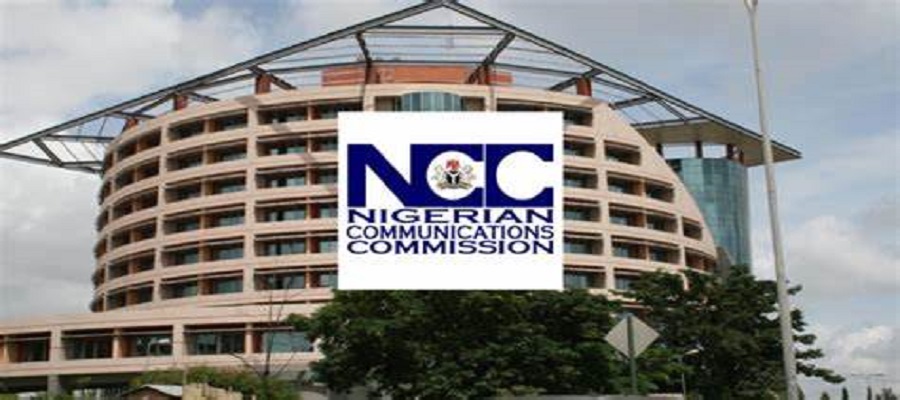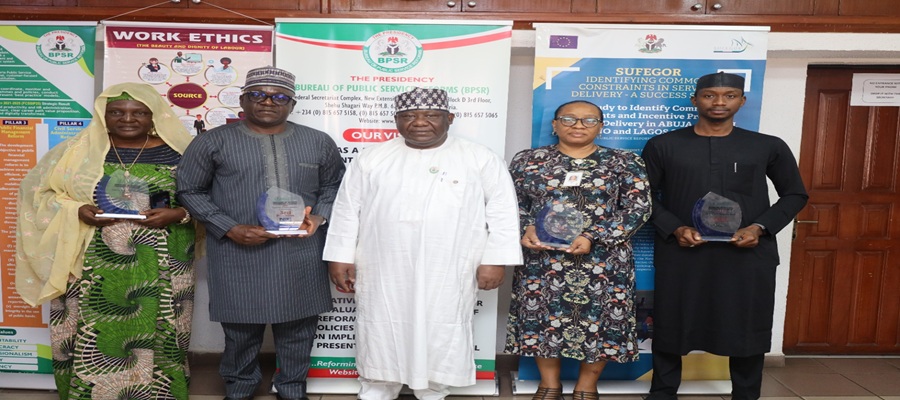Telecom
Choosing the Optimal Base Station Antennas
Opinion by Bo Jonsson, and Torbjörn Kämpe
The choice of antennas for base stations rarely receives any attention. Antennas are regarded as a cheap commodity that will “do its job” regardless of which antenna you choose.
Nothing could be further from the truth. Antennas have a tremendous impact on coverage, performance, capacity and efficiency, and choosing the right ones can make or break a mobile operator’s ability to cope with the rapidly increasing demand for data.
Looking at the installed base, one could get the impression that the obvious, or even optimal, choice for almost all sites would be the traditional 18 dBi antenna.
This antenna has 65° of horizontal beamwidth and around 6.5° of vertical beam width, as do about 80 percent of all installations on 1,700 to 2,100 MHz.
The 15 dBi antenna is still quite common, especially on the lower frequencies, with a vertical beam width of around 14°.
There are also high gain 21 dBi antennas and new so-called ultra high-efficiency antennas using air as dielectric and virtually eliminating power losses.
These antennas improve base stations’ transmission capacity, resulting in higher signal strength, an increase in geographical area coverage, improved indoor penetration, increased traffic, improved data throughput and reduced production costs per call.
One newly launched multiband antenna (by Swedish manufacturer CellMax Technologies) offers 21 dBi radiated power on the high band with 4° of vertical beam.
18 dBi antenna is chosen for historical reasons, not with forethought
How much forethought is behind the choice of 18 dBi antennas? The decision to use this antenna comes down to historical reasons.
The 18 dBi antenna was the highest gain available from antenna vendors able to deliver antennas in mass quantities, and was such an obvious choice that it became almost a de facto standard and installed almost without a second thought.
This was of course not without reasons; it was a good compromise and has served us all very well.
But the 18 dBi antenna does not deliver the highest gain anymore – high gain ultra high-efficiency antennas do.
The 18 dBi antenna was also always questioned both for its narrow vertical beam width and also its horizontal beam width of “only” 65°.
With data surpassing voice in new 3G and 4G mobile networks, interference is different and so must the antennas be to stay effective.
Most sectors would benefit significantly from an antenna with higher gain and a sharper upper roll-off curve than the standard 18 dBi can offer.
The choice of antenna depends on the individual situation
So what is the optimum antenna for all installations? The answer to this question is: “there is no such thing as an optimum antenna for all installations!”
It always depends on the situation. If there is a tall building nearby, a small antenna with lower gain like 15 dBi would do a good job. At a rural site with maximum coverage as the most important objective, a 21 dBi antenna is clearly the best option.
At suburban sites the focus shifts towards capacity, suppression of interference and less on coverage. In can be seen that a high gain antenna will provide a 3.5 dB stronger signal level in the center of the cell, and suppress interference from next cell better than the 18 dBi antenna.
The 3.5 dB extra will improve in-building coverage and data transfer speed. Also, the lower interference will improve C/I and further improve performance.
A high carrier-to-interference ratio (C/I) is the key parameter for efficiency, data rate and general success. So a high gain high efficiency antenna is again the best choice.
What about dense urban sites? After all, that is where most antennas are installed and the requirement is here to contain the signal within the cell while at the same time provide a very strong signal for good in-building penetration and high C/I for high speed data transfer.
Simulations and real-life tests show that there is a very sharp “cut off” at 650 meters from the high gain antenna at 6° tilt.
This will provide a significant reduction of interference and a magnificent control of soft handover load.
There is a remarkable difference between 5.5° and 6° which proves that antenna tilt is crucial to performance, and that antenna tilt setting is a precision job where a scale on a tilt bracket is far from accurate enough.
The high gain antenna still outperforms the 18 dBi antenna in dense urban sites and the sharper upper roll off is the main asset, actually even more important than the stronger signal level.
Going further in tilt it can be seen that the high gain antenna provides a stunning 5.5 dB stronger signal and even more in interference rejection from outside 450 meters.
That does wonders for soft handover overhead and data transfer speed. So again a clear win for the 21 dBi high gain antenna with very sharp upper roll off.
High gain, high efficiency the way to go
So in summary and if we generalize a bit, we can see that the 21 dBi antenna is a better choice in surprisingly many situations, for much the same reason as the 18 dBi antenna once replaced earlier antennas with lower gain.
They very often offer significant improvements to the traditional 18 dBi antennas. But they have a significantly more complex feeding network so the efficiency becomes a very important parameter.
After all, to extend and improve coverage requires more radiated radio frequency power, not less. So look not only for a high gain antenna, but also for a high efficiency antenna!
Bo Jonsson is senior Radio Frequency Expert, CellMax Technologies and Torbjörn Kämpe, is CEO, CellMax Technologies
Telecom
Google Finally Allows Users to Change Gmail Address, Keeps Data and Services Intact

Google has unveiled a new feature that allows Gmail users to change their existing email addresses without losing data or access to services, marking a major shift in the company’s long-standing policy.

Gmail
According to an update on Google’s account help page, the new option enables account holders to replace their current @gmail.com address with a new one while retaining all associated data, including emails, photos, and integrations with services such as Google Drive, Maps, and YouTube.
The guidance, however, was first spotted on the Hindi version of Google’s support page, suggesting that the rollout may begin in India or Hindi-speaking markets before expanding globally.
The English-language support page still carries the older advisory that Gmail addresses “usually cannot be changed.”
Google explained that under the new policy, users who update their Gmail address will automatically keep their original address as an alias.
This means emails sent to the old address will continue to arrive in the inbox, and the original address will remain valid for signing in to Google services.
Previously, users seeking a new Gmail address had to create an entirely new account and manually transfer their data, a process that often disrupted third-party app integrations. The new feature eliminates that inconvenience, ensuring continuity for users.
The company further clarified that while users can reuse their old Gmail address at any time, accounts that change their address will face certain restrictions.
These include a 12-month waiting period before another new Gmail address can be created, and the inability to delete the newly chosen address once it has been set.
Google assured users that all existing data would remain intact after an address update, including stored photos, messages, and emails.
The gradual rollout of the feature indicates that full global adoption is expected in the coming months, a move likely to be welcomed by millions of users who have long requested the ability to update their Gmail identities without starting afresh.
Telecom
Nigeria’s Internet Usage Hits 1.24m Terabytes – NCC

Nigerian Communications Commission (NCC) has said that Nigeria’s internet usage reached a record 1.24 million terabytes in November 2025.

According to the latest data from the NCC, the figure rose modestly from 1.235 million terabytes in October, reflecting steady growth in digital activity across the country.
Broadband penetration in Nigeria crossed the halfway mark in November 2025, reaching 50.58 per cent, up from 45.61 per cent in January, the telecoms regulator reported.
The figure, however, falls short of the 70 per cent coverage target outlined in the National Broadband Plan 2020–2025, which expires this month.
The country had roughly 109 million broadband subscriptions by November. Growth has been uneven, hindered by infrastructure and regulatory constraints, including frequent fibre-optic vandalism that triggers 30 to 43 network cuts daily, high right-of-way fees, and declining subscriber numbers earlier in the year.
Expansion of mobile networks, particularly 3G and 4G services, alongside limited 5G rollouts in urban centres, affordable smartphones, and competitive data plans, has driven uptake.
Investments in the National Communications Backbone and private-sector initiatives have also improved access, especially in underserved areas.
While Nigeria is gradually improving digital inclusion, achieving the original broadband plan remains challenging due to high infrastructure costs, coverage limitations, and deployment hurdles.
The NCC maintains that continued investment in mobile networks and broadband infrastructure will sustain gradual growth in the sector.
Commenting on the development, some Nigerian analysts attributed the surge to the broader mobile and broadband adoption and the growing appetite for streaming, online learning and other digital services.
According to the analysts, the figures suggest that internet connectivity is no longer a luxury but a necessity for both business and leisure, underscoring the slow but steady expansion of Nigeria’s digital economy.
Telecom
NCC Ranked Among Top 3 MDAs for Best Website Performance in 2025

Bureau of Public Service Reforms (BPSR) has named the Nigerian Communications Commission (NCC) among the top three Ministries, Departments and Agencies (MDAs) of the Federal Government with the Best Ranking in Website Performance for 2025.

L-R: Head Special Projects, Nigerian Export Promotion Council (NEPC), Salamatu Andu; Executive Commissioner, Technical Services, Nigerian Communication Commission (NCC), Engr. Abaraham Oshadame; Director General Bureau of Public Service Reforms (BPSR), Head Customer Support Service, Galaxy Backbone, Rosemary Ehize; Secretary to the ES. Nigerian Content Development and Monitoring Board, Tahir Aminu at the BPSR award ceremony for top four MDAs in BPSR Website Performance and Ranking 2025 at the BPSR office on Tuesday, 23rd December, 2025.
This is coming barely three weeks after the telecom regulator was recognized as one of the top five best-performing Federal Government agencies for 2025 by the Presidential Enabling Business Environment Council (PEBEC) – a testament to the Commission’s consistency in investment in technology for ensuring efficient service delivery.
In the BPSR 2024/2025 scorecard ranking of agencies’ websites, the NCC came second in the ranking, trailing behind Galaxy Backbone Limited, which came first while the Nigeria Export Promotion Council (NEPC) clinched the third position, from a pool of 235 MDAs, whose website were evaluated.
BPSR deployed 14 evaluation criteria in include MDA’s website compliance with .gov.ng domain name, appearance and aesthetics (look and feel) of the website, content, relevance to MDAs mandate/government policy and the website’ structure.
Others include website’s responsiveness (device compatibility), security, load time, usability/ease of navigation, availability/uptime, functionality, interactivity, accessibility and capacity building.
The recognition was announced at the official release of Federal Government 2024/2025 Scorecard Ranking for MDAs’ Website held at the Federal Ministry of Finance Auditorium in Abuja on Monday (December 22, 2025) while the award presentation took place at BPSR’s Office on Tuesday (December 23, 2025).
The award, which is an important index metric of the National e-Government Masterplan for determining the Nigeria e-Government Status, was received by the Commission in recognition of its commitment to maintaining a world-class website that enhances service delivery to the citizens.
Receiving the award on behalf of the Executive Vice Chairman of the NCC, Dr. Aminu Maida, the NCC’s Executive Commissioner, Technical Services, Abraham Oshadami, appreciated the BPSR for the recognition, describing the award as “another encouragement for the Commission to be a better public service institution leveraging digital platforms such as our web presence to enhance public service delivery to our various stakeholders, thereby implementing the Federal Government’s Ease of Doing Business policy direction.”
While presenting the award to the NCC, alongside other two agencies, BPSR’s Director-General, Mr. Dasuki Arabi, commended the top three for their proactive decisions in maintaining world-class websites, which are compliant with the Federal Government’s policy direction in effective and efficient service delivery to the citizens.
According to the DG, the 2024/2025 MDA’s websites’ ranking represents a collective effort of federal public institutions in Nigeria to be transparent, accountable and open in governance, as well as a confirmation to align with global best practices in service delivery to the citizens.
Developed about six years ago, Arabi said as a result of the annual ranking, more public institutions have indicated readiness to embrace reforms, and align with the policy direction of the current administration’s Renewed Hope agenda on improve governance for effective service delivery, as introduced by His Excellency President Bola Ahmed Tinubu.
“The ideals of harnessing and deploying technological tools for service delivery has become imperative following the COVID pandemic, and distortions of socio-economic system of nations, culminating in the evolution of competitiveness, cost effectiveness, and agile governance.
“As engine room of governance, it behoves on us in the public service to perform our statutory duties and we must put in place technological innovations and standardized websites to operate services as well as deliver service needs to citizens,” he said.
The Scorecard exercise, he said, is part of the BPSR reform broader function of conducting research on reform implementation efforts and presenting ‘best practice’ models to the entire Public Service, and to among others, improve access to government information, facilitate seamless financial transaction, eliminate corruption and cyber theft, as well as facilitate access to government services.
Speaking on the rigorous nature of the exercise that produced the top three winners, the DG said “in the past few weeks members of the Scorecard Jury drawn from inter-Ministerial Agencies, had worked tirelessly to mill websites of selected MDAs through a rigorous process of enduring criteria for the ranking and the outcome had also passed through a quality assurance mechanism to validate the outcome.”

 E-Financial3 days ago
E-Financial3 days agoBanks quietly move to enforce new ₦50 transfer levy from Jan. 1

 General News3 days ago
General News3 days agoEcobank Guarantees Seamless Digital Banking Services Throughout the Christmas and Year-End Period

 News2 days ago
News2 days agoHow Moniepoint’s Founders, Tosin Eniolorunda and Felix Ike are Redefining African Tech and Finance

 Telecom23 hours ago
Telecom23 hours agoGoogle Finally Allows Users to Change Gmail Address, Keeps Data and Services Intact

 General News22 hours ago
General News22 hours agoT2 Backs Youth Excellence as NCBC Wins Bosun Tijani Foundation Basketball Tournament

 News22 hours ago
News22 hours agoInsomniaQ Spotlights African Creativity in Lagos










